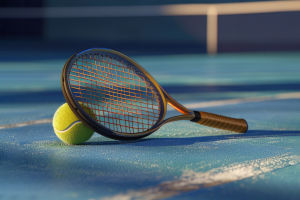Skiing is one of the most popular winter sports worldwide, attracting many passionate skiers. There are two main types of skiing: snowboarding and skiing with two skis.
Both have their own unique charm, but they also come with their own risks. So, what should we know about the common injuries that come with each type? Let's explore the injury hotspots for these two thrilling activities!
Common Injuries in Snowboarding
In snowboarding, the most common injuries typically affect the upper body. One major reason for this is the way snowboarders fall—often, when they lose balance, they tend to reach out with their hands to break the fall, which can lead to wrist injuries. Here are the top three injury zones for snowboarders:
1. Wrist Injuries: A frequent injury in snowboarding, wrists get hurt mostly when the rider falls and tries to catch themselves with their hands. Wrist fractures and sprains are common.
2. Ankle Injuries: Jumping or landing incorrectly is another cause of injury in snowboarding. Ankle sprains, fractures, or even breaks can happen if the ankle twists too much upon landing.
3. Shoulder Injuries: When falling, the shoulder often takes the brunt of the impact. Injuries like rotator cuff strains or shoulder dislocations are frequent.
Common Injuries in Skiing
In contrast, skiing usually leads to injuries that affect the lower body. Skiers are more prone to knee injuries due to the nature of their sport, where they maintain a facing-forward stance and their legs move independently. The most common injuries in skiing include:
1. Knee Injuries: Skiers are often at risk for knee injuries, especially during high-speed descents or when they lose control. Common knee injuries include sprains and tears of ligaments like the ACL (anterior cruciate ligament).
2. Ankle Injuries: While not as common as knee injuries, skiers also face ankle injuries. These can happen from falls or imbalances during skiing.
3. Shoulder Injuries: Similar to snowboarders, skiers too experience shoulder injuries when falling. Rotator cuff strains and dislocations are also frequent.
Why Do Injury Zones Differ Between Snowboarding and Skiing?
Now, you might wonder: why do these two types of skiing have different injury hotspots? The primary reason lies in the body mechanics and equipment used in both activities.
In snowboarding, riders face sideways on the board with both feet strapped onto the same board. This position makes it easier for them to lose balance and fall in a way that forces them to catch themselves with their hands, which is why wrist and shoulder injuries are more common.
On the other hand, skiers are in a forward-facing position with their feet on separate skis. This stance places more stress on the knees, making them more vulnerable to injury, especially during rapid descents or improper technique.
How Can We Prevent Ski Injuries?
We can reduce the risk of injuries in both snowboarding and skiing by following a few key safety tips. Here are some important things to remember:
1. Wear Proper Protective Gear: Always wear the necessary protective equipment for the activity. Helmets, knee pads, wrist guards, and goggles can help protect you in case of falls.
2. Master Proper Techniques: If you're new to the sport, take lessons before hitting the slopes. Learning the correct posture and fall techniques will help you avoid injuries. It's essential to know how to fall safely to minimize damage.
3. Follow Ski Resort Guidelines: Always pay attention to the rules and signs posted at the ski resort. Choose trails suited to your skill level, and stay alert for other skiers or obstacles that might cause accidents.
4. Stay Fit and Train: Before hitting the slopes, it's crucial to prepare your body physically. Focus on strength training, flexibility exercises, and balance drills. This will not only enhance your skiing skills but also lower the risk of injury.
As we venture out onto the slopes for some fun in the snow, let's keep these injury risks in mind. By wearing proper equipment, learning the right techniques, following safety guidelines, and staying in good shape, we can reduce the chances of injury and fully enjoy our time on the slopes. Remember, no matter what type of skiing or snowboarding we enjoy, safety always comes first!
Lykkers, are you ready to tackle the slopes? Stay safe and have fun out there!


